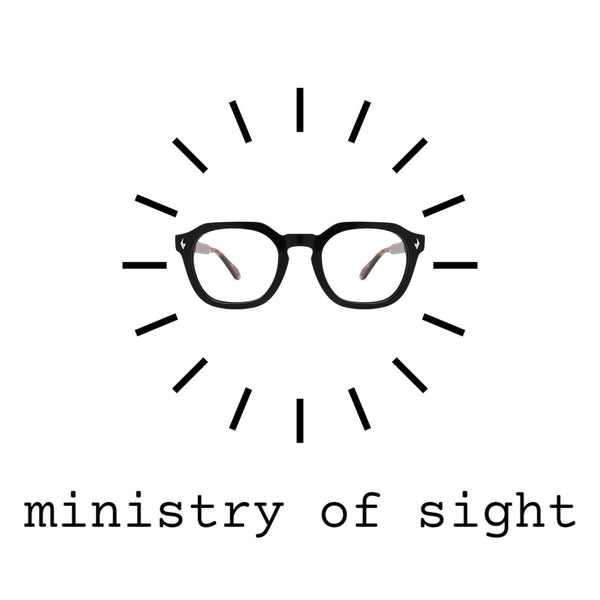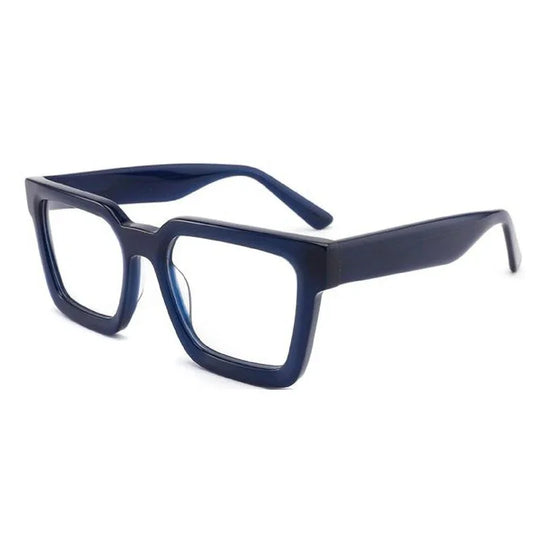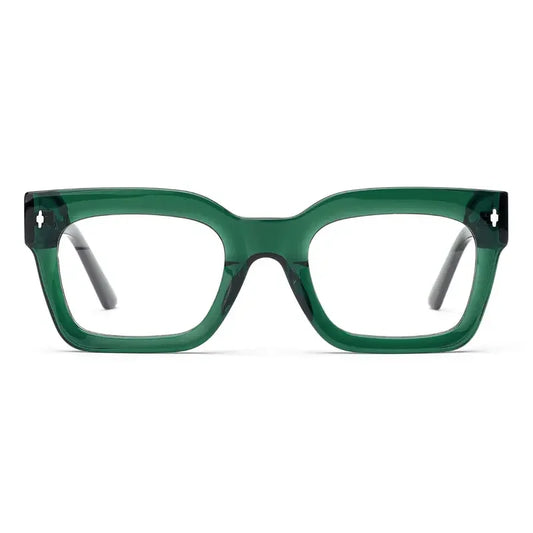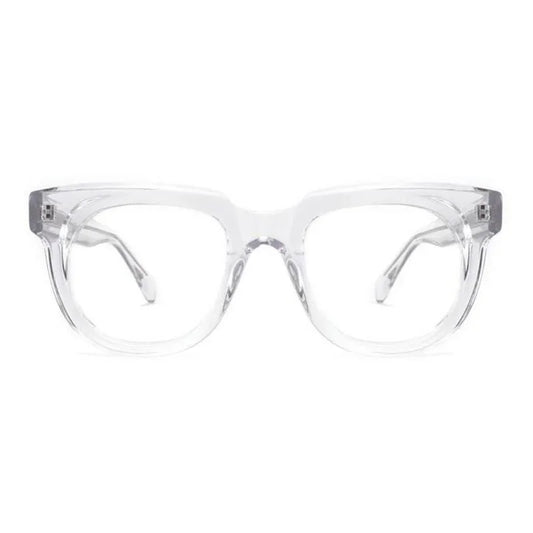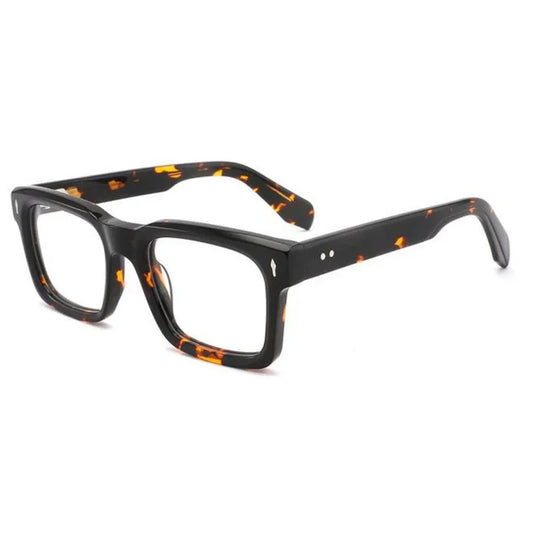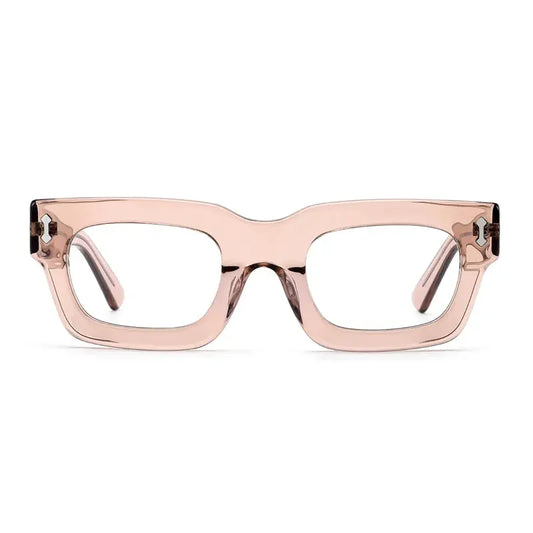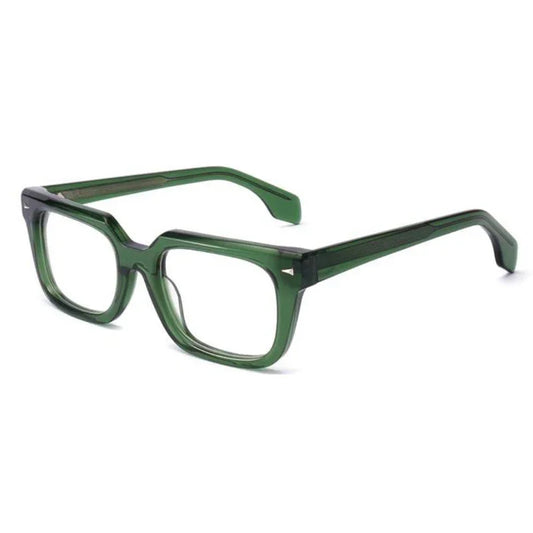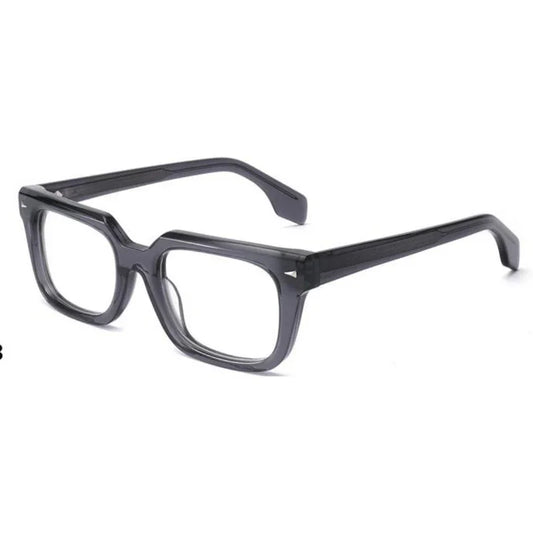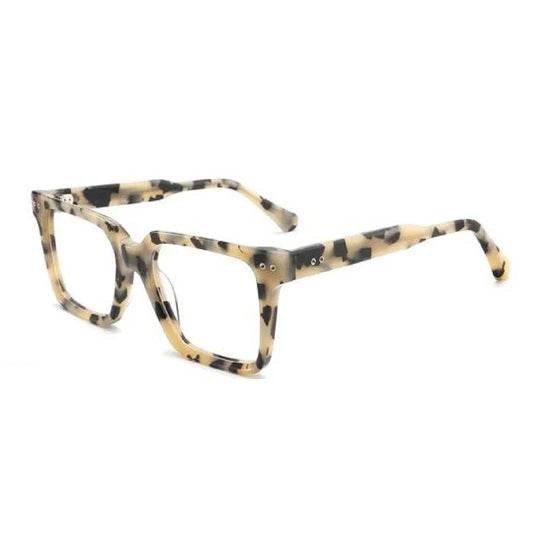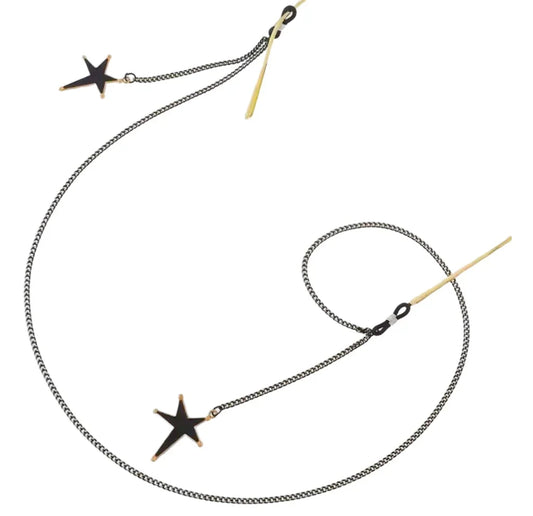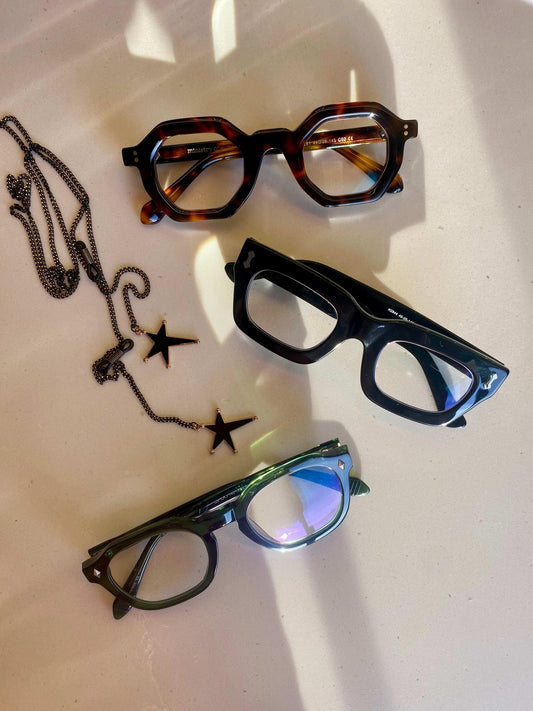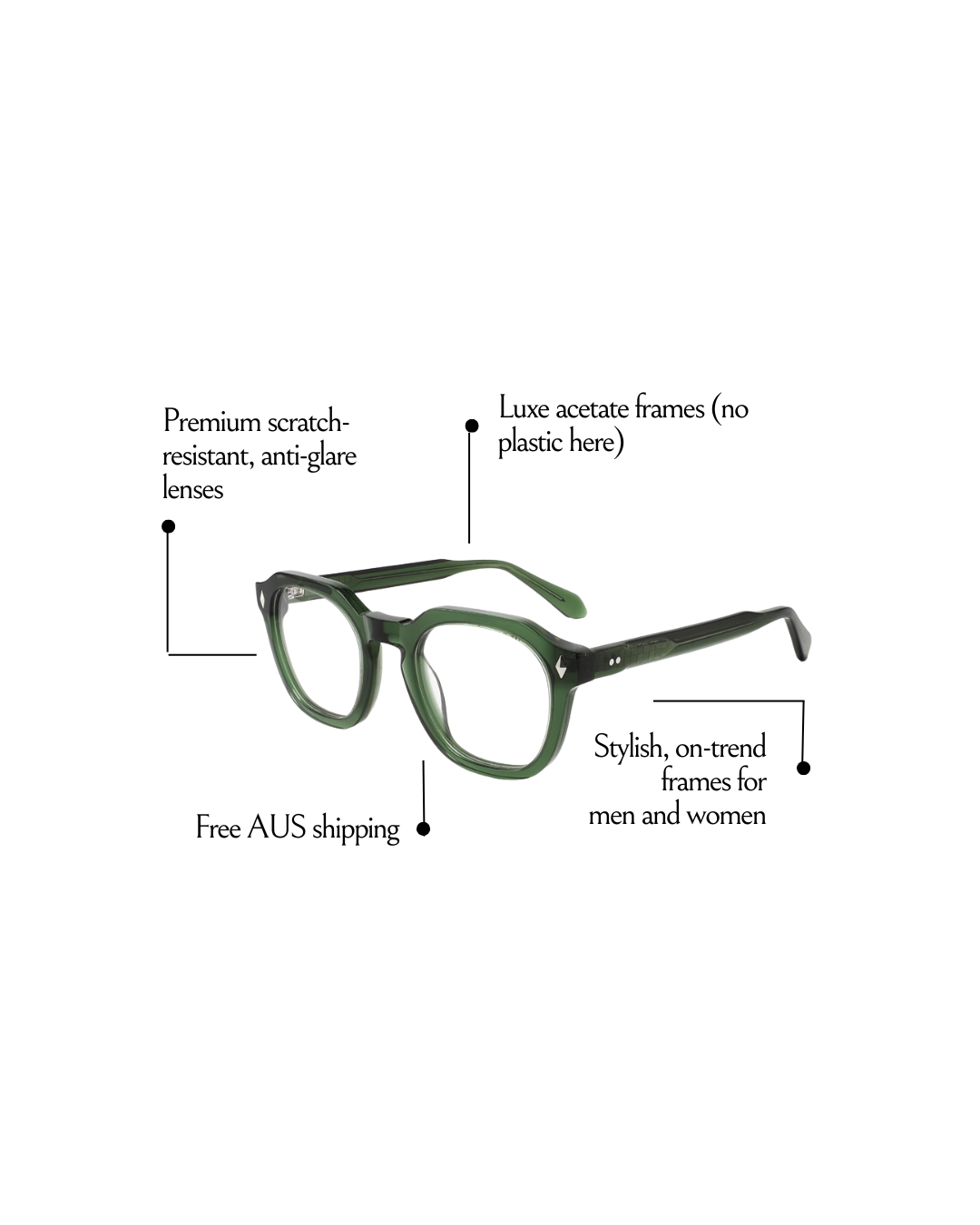
Understanding What is Lens Strength for Glasses
Everyone talks about getting the right glasses but most people have no clue what lens strength actually means or why it matters. It sounds simple and yet lens strength is measured in diopters and can range from as low as plus or minus 0.25 up to plus or minus 6.00 for significant vision correction. Most reckon it is just about making things less blurry. The real shock is that even a tiny mistake in lens strength can cause persistent headaches and eye strain and that’s why understanding these numbers properly changes everything for your eyes.
Table of Contents
- What Is Lens Strength And Its Importance
- The Science Behind Lens Strength
- How Lens Strength Affects Vision Correction
- Different Types Of Lens Strength Explained
Quick Summary
| Takeaway | Explanation |
|---|---|
| Lens strength is measured in diopters. | Diopters (D) quantify the optical power needed for vision correction, impacting how lenses function for various impairments. |
| Regular eye exams ensure accurate prescriptions. | Updating prescriptions as vision changes is vital to prevent strain and maintain good eye health. |
| Different lens strengths cater to specific vision issues. | Mild to advanced lens strengths are tailored for conditions like myopia, hyperopia, and astigmatism, ensuring optimal clarity. |
| Progressive lenses accommodate multiple vision needs. | These lenses provide smooth transitions for different distances, ideal for those with age-related visual changes. |
| Correct lens strength enhances daily visual performance. | Accurate lens strength reduces blurriness, alleviates eye strain, and supports clearer sight for everyday tasks. |
What is Lens Strength and Its Importance
Lens strength represents the optical power required to correct vision impairments, measured in diopters (D). This crucial measurement determines how effectively glasses can address specific vision challenges, allowing individuals to see clearly and comfortably. Understanding lens strength is essential for anyone experiencing refractive errors like myopia, hyperopia, or astigmatism.
The Science Behind Lens Strength
When light enters our eyes, it should focus precisely on the retina to create a sharp image. Lens strength compensates for irregularities in eye shape or curvature that prevent optimal light focusing. Positive lens strengths help farsighted individuals, while negative lens strengths assist those who are nearsighted. The numerical value indicates the lens’s corrective power.
Key aspects of lens strength include:
- Measured in diopters (D)
- Indicates the lens’s refractive correction
- Ranges from mild (+/- 0.25) to significant (+/- 6.00)
Why Lens Strength Matters
Accurate lens strength is critical for visual comfort and overall eye health. Incorrect prescriptions can lead to eye strain, headaches, and potential long-term vision problems. Regular eye examinations help determine the precise lens strength needed, which changes as our eyes naturally age.
For those interested in understanding more about selecting the right reading glasses, our comprehensive reading glasses lens power guide provides additional insights into finding your perfect lens strength.
The Science Behind Lens Strength
Lens strength operates on precise optical principles that transform how light enters and focuses within the human eye. Understanding the scientific mechanism requires exploring how corrective lenses manipulate light pathways to compensate for natural refractive errors, enabling clearer and sharper vision.
Optical Principles of Vision Correction
The human eye functions like a complex camera, with the cornea and lens working together to focus incoming light precisely onto the retina. When this natural focusing mechanism becomes impaired, lens strength provides a mathematical solution to redirect light waves. Corrective lenses bend light at specific angles, ensuring it converges exactly on the retinal surface, thus neutralising vision impairments.
Key optical principles include:
- Light refraction through curved lens surfaces
- Mathematical calculation of lens curvature
- Precise angle of light redirection
Understanding Lens Power Calculations
Diopters represent the scientific measurement of lens strength, indicating how much light will be bent to achieve perfect focal point alignment. A positive diopter value suggests lens convergence for farsighted individuals, while negative values indicate lens divergence for nearsighted people. The numerical value directly correlates with the lens’s ability to redirect light waves, creating a precise optical correction tailored to individual vision requirements.
Learn more about reading glasses lens power to understand how these scientific principles translate into practical vision solutions.
How Lens Strength Affects Vision Correction
Vision correction through lens strength is a precise process that addresses individual visual challenges by redirecting light waves to create clear, focused images. Each person’s eyes have unique characteristics, requiring personalised lens prescriptions that precisely match their specific refractive errors.
Types of Vision Impairments Corrected
Lens strength targets three primary vision conditions: myopia (nearsightedness), hyperopia (farsightedness), and astigmatism. Nearsighted individuals require negative lens strengths that diverge light rays, allowing distant objects to focus correctly on the retina. Farsighted individuals need positive lens strengths that converge light rays, enabling clearer close-up vision. Astigmatism requires more complex lens designs that correct irregular corneal curvature.
Key vision correction characteristics include:
- Personalised light redirection
- Mathematical precision in lens design
- Individual eye structure compensation
Impact on Daily Visual Performance
Correct lens strength transforms visual experience by eliminating blurriness, reducing eye strain, and preventing potential long-term vision complications.
The following table breaks down the core types of vision impairments mentioned and explains how different lens strengths address each one, supporting easier comparison and understanding.
| Vision Condition | Lens Strength Needed | Correction Approach | Key Details |
|---|---|---|---|
| Myopia (Nearsighted) | Negative (–) | Diverges light rays | Helps focus distant objects onto the retina |
| Hyperopia (Farsighted) | Positive (+) | Converges light rays | Assists in clear near vision |
| Astigmatism | Cylindrical | Compensates irregular corneal curvature | Uses specially shaped lenses to direct light evenly |
| Precise lens strength allows individuals to perform daily tasks with enhanced clarity and comfort, whether reading small text, working on digital screens, or enjoying distant landscapes. |
Our guide on understanding lens types for reading glasses provides deeper insights into how different lens strengths support various visual needs.
Different Types of Lens Strength Explained
Lens strengths vary significantly, reflecting the complex range of visual corrections needed by individuals. Understanding these variations helps people select the most appropriate corrective eyewear for their specific vision requirements, ensuring optimal visual clarity and comfort.
This table summarises the categories of lens strength described in the article, including their diopter ranges and typical uses, making it easier for readers to compare their options at a glance.
| Category | Diopter Range | Typical Use |
|---|---|---|
| Mild Correction | +/- 0.25 to 1.00 D | For minor refractive errors and low-level vision issues |
| Moderate Correction | +/- 1.25 to 3.00 D | Suitable for noticeable vision challenges |
| Significant Correction | +/- 3.25 to 6.00 D | Used for substantial vision impairments |
| Advanced Correction | Above +/- 6.00 D | For severe refractive errors requiring precise correction |
Lens Strength Categories
Lens strengths are categorised into distinct ranges that address different levels of vision impairment. Mild lens strengths typically range from +/- 0.25 to +/- 1.00 diopters, suitable for individuals experiencing minimal refractive errors. Moderate lens strengths span +/- 1.25 to +/- 3.00 diopters, providing more substantial vision correction for people with noticeable visual challenges.
Key lens strength classifications include:
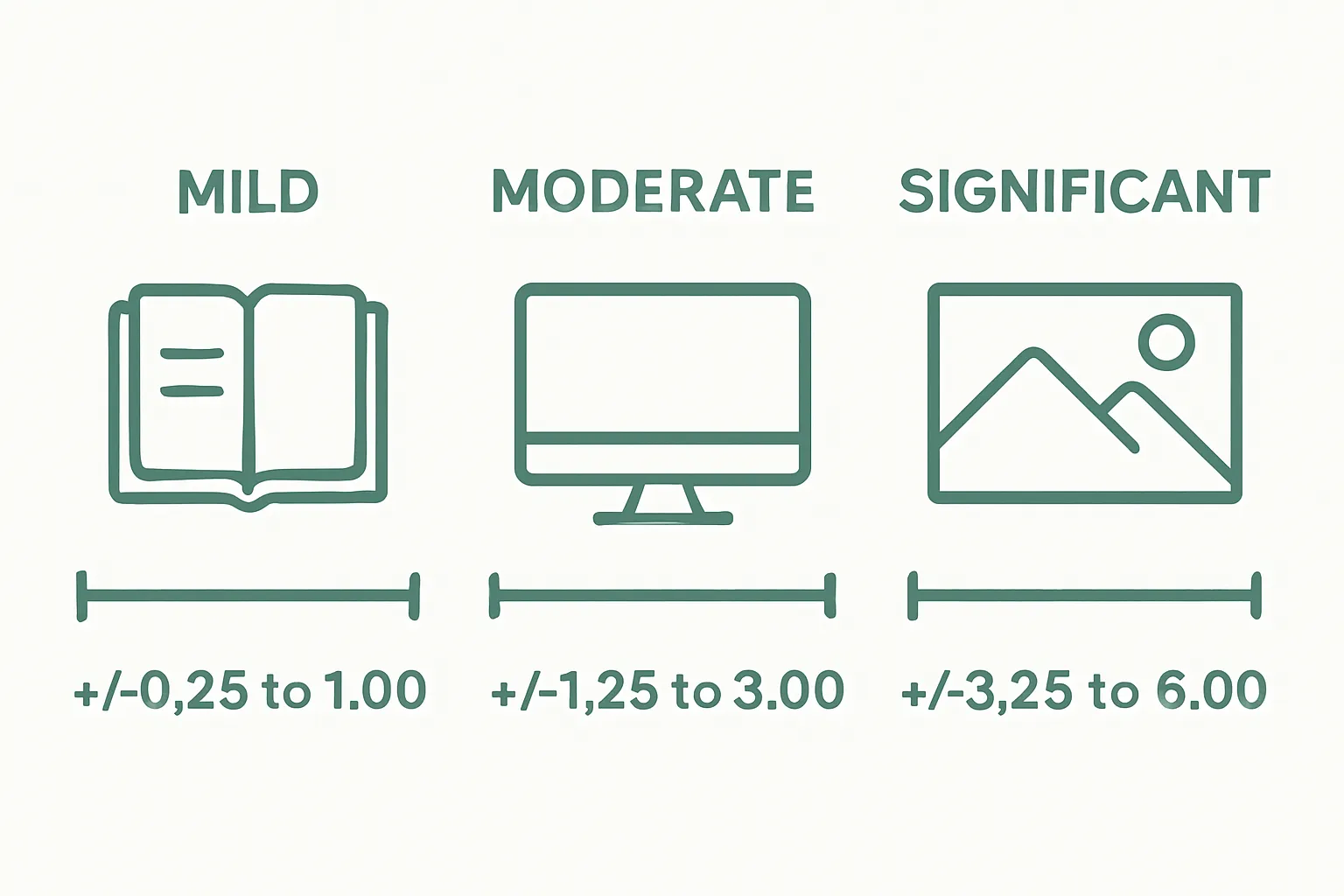
- Mild correction (+/- 0.25 to 1.00)
- Moderate correction (+/- 1.25 to 3.00)
- Significant correction (+/- 3.25 to 6.00)
- Advanced correction (above +/- 6.00)
Progressive and Multifocal Lens Strengths
Progressive lens strengths offer a more complex solution for individuals experiencing multiple vision challenges. These lenses provide seamless transitions between different focal points, allowing users to see clearly at various distances without switching glasses. Multifocal designs incorporate different lens strengths within a single lens, catering to age-related vision changes like presbyopia.

Discover more about understanding lens types for reading glasses to explore the nuanced world of vision correction technologies.
Ready to Find Your Perfect Lens Strength?
If you are tired of guessing and want sharper vision that truly fits your needs, you are not alone. Many people struggle with blurry text or eye strain because they do not know the right lens strength for their reading glasses. We understand how important clarity and comfort are in your daily life. That is why all our Stylish Reading Glasses for Men and Women are carefully crafted to match the lens strengths and recommendations discussed in our article.

Do not let uncertainty stop you from seeing your best. Visit ministryofsight.com.au to explore our full range of stylish reading glasses. With plenty of options and expert information to guide your choice, now is the perfect time to upgrade your vision. Browse our Spring Sale for limited-time deals and give your eyes the quality they deserve today.
Frequently Asked Questions
What does lens strength mean in glasses?
Lens strength refers to the optical power required to correct vision impairments, measured in diopters (D). It determines how effectively lenses can address specific vision challenges, ensuring clear and comfortable sight.
How are lens strengths measured and what do the numbers indicate?
Lens strengths are measured in diopters (D). Positive values are for farsightedness (hyperopia), while negative values are for nearsightedness (myopia). The numerical value indicates the degree of correction needed for clear vision.
Why is it important to have the correct lens strength?
Having the correct lens strength is crucial for visual comfort and overall eye health. An incorrect prescription can lead to eye strain, headaches, and long-term vision problems, making regular eye examinations essential to determine accurate lens strength.
What types of vision impairments does lens strength correct?
Lens strength primarily corrects three conditions: myopia (nearsightedness), hyperopia (farsightedness), and astigmatism. Each condition requires different lens strengths and designs to redirect light and achieve clear vision.
